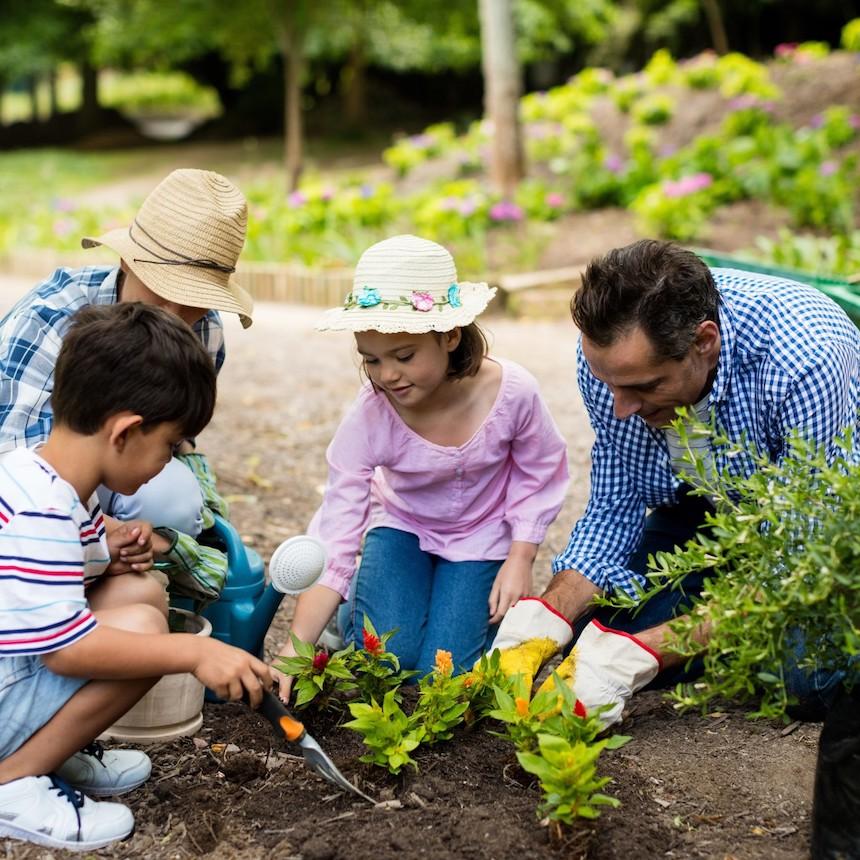Specialist Gardening Tips for Creating a Sustainable and Eco-Friendly Yard
Getting started on the journey to produce a environment-friendly and lasting garden includes a collection of calculated choices and methods that not just boost the beauty of your space however additionally add favorably to the setting. To uncover more expert insights and useful methods, allow us discover the key elements that define an ecologically mindful garden.
Select Indigenous Plants
Selecting native plants for your garden is a basic action toward accomplishing sustainability. Additionally, native plants generally require much less water as soon as developed, contributing to more reliable water usage.
Beyond their useful benefits, native plants play an important role in sustaining regional biodiversity. They supply important habitat and food resources for native wildlife, consisting of pollinators such as birds, bees, and butterflies. This promotes a balanced ecosystem, which is essential for the health and wellness of your garden and the surrounding setting.

Implement Water Conservation
Implementing water conservation techniques is important for keeping a lasting yard. Effective water usage not only lowers the environmental impact yet additionally makes sure that plants get appropriate hydration without waste.
Additionally, mulching is a valuable practice for preserving water. By using a layer of natural mulch, such as wood chips or straw, around the base of plants, garden enthusiasts can lessen soil evaporation and maintain regular wetness levels. Mulch additionally aids control dirt temperature and suppresses weed development, additional adding to plant health.
Rain harvesting is one more sustainable strategy. Installing rainfall barrels or other collection systems allows garden enthusiasts to catch and keep rainwater, which can later on be utilized throughout completely dry periods. This not only saves local water but additionally supplies a natural, chemical-free resource for irrigation.
Last but not least, picking drought-tolerant plant species can considerably decrease water needs. These plants are adapted to thrive in low-water problems, making them optimal for environmentally friendly yards. gardening tips. Carrying out these water preservation techniques will cultivate a durable, lasting garden
Usage Organic Gardening Approaches

Pest management in a natural yard counts on incorporated pest management (IPM) techniques. These include encouraging useful bugs, utilizing all-natural killers like lacewings and ladybugs, and carrying out crop rotation to disrupt pest life cycles. Companion planting, where certain plants are expanded together to repel pests or attract beneficial pests, is an additional efficient method.
Weed control is managed through mulching and hand-operated removal, instead of relying on herbicides. Compost next page not only suppresses weeds but additionally preserves wetness and improves dirt health and wellness as it breaks down. Organic composts, such as straw, timber chips, and leaves, are especially advantageous.
Develop Wild Animals Habitats
Developing wildlife habitats within your yard not only boosts biodiversity however additionally supports the ecological community's equilibrium. By creating spaces that attract and sustain local animals, you can create a thriving micro-ecosystem that profits both plants and animals. Begin by incorporating indigenous plants, as these are appropriate to your neighborhood climate and provide necessary food and shelter for wild animals. Native vegetation supports an array of insects, birds, and tiny mammals, contributing to the eco-friendly network.
Take into consideration adding a water attribute, such as a fish pond or birdbath, to offer a regular water resource. Water aspects bring in a variety of species, from amphibians to pollinators, enhancing the yard's vigor. Additionally, installing birdhouses, bat boxes, and insect hotels supplies secure nesting sites and motivates biodiversity.
Leave some locations of your yard uninterrupted, permitting fallen leave trash and dropped branches to collect. By prioritizing these sustainable methods, your garden can become a haven for regional wildlife, promoting ecological health and sustainability.
Practice Composting and Mulching
A key aspect of lasting horticulture, composting and mulching, dramatically boosts dirt wellness and minimizes waste. Composting includes recycling organic products such as cooking area scraps, yard cuttings, and leaves. These materials break down to form nutrient-rich compost, which works as an all-natural fertilizer. Unlike synthetic plant foods, garden compost enhances the soil with vital nutrients and useful microbes, promoting a healthier yard environment.
Mulching, on the other hand, entails covering the soil surface area with not natural or organic products, such as straw, timber chips, or shredded leaves. This technique provides a number of advantages: it saves dirt moisture, reduces weed development, and moderates soil temperature level. Compost likewise progressively go to this web-site breaks down, adding raw material to the dirt and further improving its fertility.
To practice reliable composting, guarantee your compost heap has a balance of eco-friendly products (abundant in nitrogen) and brownish products (rich in carbon), preserving ample aeration and dampness. gardening tips. Routinely turning the stack speeds up decay. For mulching, use a 2-3 inch layer around plants, guaranteeing it does not straight call stems or trunks to protect against rot
Conclusion

Choosing indigenous plants for your garden is a basic step towards achieving sustainability.Moreover, including native look at this now plants can boost the aesthetic charm of your garden. These plants are adapted to grow in low-water conditions, making them excellent for environment-friendly yards. Executing these water preservation methods will certainly cultivate a resilient, lasting yard.
In conclusion, developing a lasting and environmentally friendly garden includes the strategic selection of indigenous plants, the fostering of water preservation techniques, and the application of natural horticulture methods.
Comments on “Discover the Top Gardening Tips for Thriving Indoor Plants”